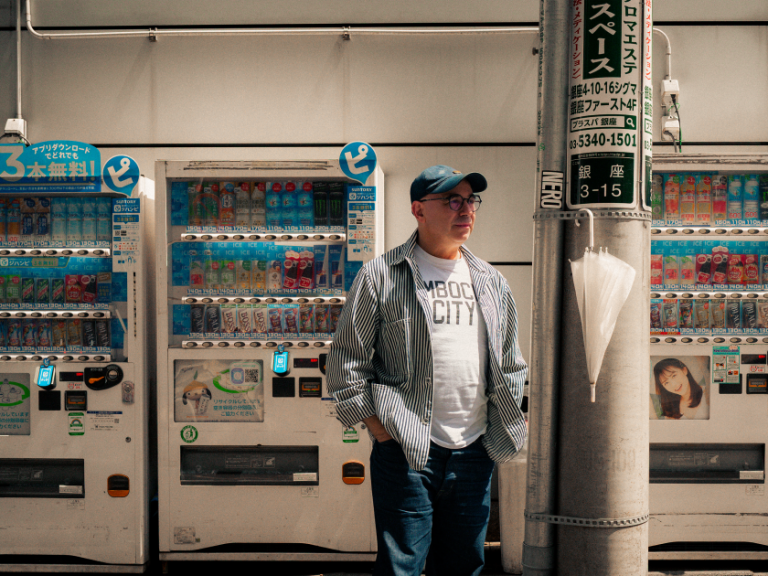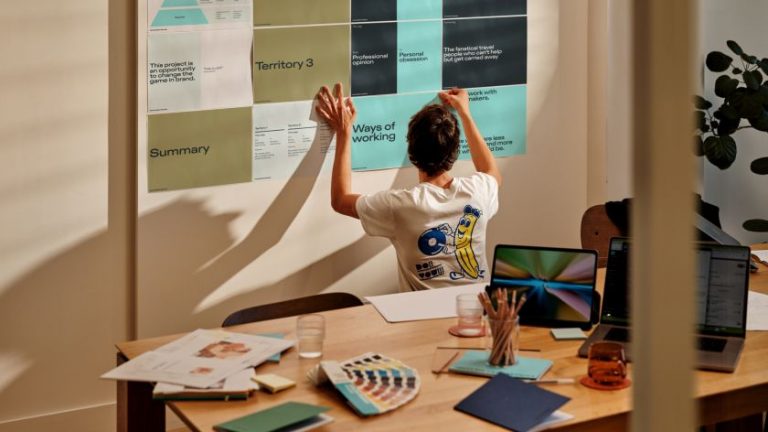Image licensed via Adobe Stock
Three-quarters of you say that Instagram has become “useless” for reach and engagement. With the help of the Creative Boom community, we revisit some alternative strategies to get attention.
In today’s sluggish economy, finding new clients and maintaining a steady workflow is more challenging than ever for graphic designers, illustrators, artists and other creatives. And here’s one more thing that isn’t helping.
While Instagram has long been a useful channel for showcasing our creativity, its effectiveness for reaching potential clients is waning due to algorithm changes and increasing competition.
Well, that’s how it seems to us, anyway. But do others agree? To find out, we held a poll on X to find out. And the results were pretty clear.
When asked, “Is Instagram dying for creatives in terms of reach and engagement?” a staggering 75.8% of you replied yes, with only 11.9% believing “It’s still good” and 12.4% saying “It’s the same”. And that chimes with the conversations we’ve heard across the industry recently. As designer Sophie O’Connor puts it: “Unless you’re making videos or reels daily, it doesn’t seem to be worth posting work on Instagram.”
So what’s the alternative? We suggest revisiting other, time-tested marketing strategies that can help you connect with clients and grow your businesses instead of relying on increasingly unreliable social media platforms.
By diversifying your approach and focusing on more direct, relationship-building tactics, you’ll find it easier to thrive, even as the social media landscape continues to evolve. Read to learn what that looks like in practice.
1. Refine your niche
In a crowded market, specificity can be your best friend. By narrowing your focus and specialising in particular services or industries, you can become the go-to expert, whether it’s creating compelling infographics for educational publishers or bespoke branding for tech startups.
This focused approach will naturally make your marketing efforts more targeted and effective. And that means that rather than posting on generic platforms like Instagram, you’ll be able to find places that can target the kinds of people you’re targeting.
That’s exactly what creative speaker, author and coach Anna B Sexton has been doing lately. “Recently, I’ve been taking a ‘slow’ approach to marketing,” she says. “In other words, I’m only really posting where the people I want to serve are hanging out.”
By being selective about where you market your services, you can ensure you’re reaching the right clients who fit your expertise perfectly. So, it becomes less about ‘big numbers’ and more about making the right connections – which is, after all, what self-promotion is all about.
2. Enhance your portfolio
Your online portfolio is normally the first impression you’ll make on a potential client. So it’s always important to ensure it’s up-to-date, easy to navigate and showcases a breadth of projects that highlight your speciality.
That means including detailed, up-to-date case studies demonstrating how your work meets client needs. This is the most powerful way to persuade potential clients of your capability and professionalism.
All that takes time… which many of us think we don’t have. But actually, if we’re not posting on Instagram all the time, then suddenly, a lot more time will appear. If you’re not sure where to start, read our tips on how to instantly improve your portfolio.
3. Leave the house
Another thing you can do with the time you save posting on Instagram is to get out of the house and meet people in real life. Because, ultimately, business is about people. So make friends, be nice, and things will happen.
As illustrator and designer Rich Banks suggests: “Join local clubs or groups that you have an interest in and talk to people normally. Don’t market yourself, don’t push yourself or your services on people, just make connections.”
Victoria Harris, managing director of The Harris Group agrees. “I volunteer with a couple of local charities, a green space group and previously a food bank,” she says. “It’s led to many new clients and sharing of ideas. I didn’t join them for that reason, but it turned out to be a very happy accident.”
Networking is about building relationships, so focus on meaningful interactions rather than immediate sales pitches, and you’re sure to cultivate long-term connections. That’s why illustrator, graphic and motion designer Stephanie Jade advises you “go to creative meet-ups to make friends. Your network isn’t just about people who can do things for you; you never know where opportunities can come from.”
As designer and agency founder Stanley Vaganov notes: “People spend with people they know. It is virtually impossible to close a one-million deal through DMs unless you are a well-known name. So go out and meet people. Facilitate workshops, do talks, and attend events. All my best clients came from someone I met in real life or were recommended by someone I personally knew.”
Finally, artist and surface pattern designer Amina S adds: “Definitely carry business cards. It’s surprising how often your creative work will come up in a conversation.”
4. Focus locally
One thing Instagram’s amazing at is letting you connect with people around the world. But actually, when it comes to business, you’re usually better off looking closer to home.
“I made the biggest strides in my career by starting local,” says illustrator Tom Froese. “As a designer first, and as a very eager one, I reached out to many local studios and agencies. And without ulterior motives, I made friends who happened to work there.
“Eventually, I started getting known for my illustrative work,” he continues. The next strategy for me was doing collaborations with fellow illustrators. This helped me forge connections and exponentially increased my reach, as each shared the same project.”
Multidisciplinary artist Hab Oh takes a similar line. “Search for your local art community,” he advises. “Look up art collectives, residencies or community nights at your local museum or gallery. Try to attend any art events: gallery showings, conventions, exhibitions. Join or start a newsletter. Integrate yourself with your community. Small businesses such as cafes and coffee shops are usually a hot spot for all life paths.”
5. Forge partnerships with other creatives
Collaborating with other freelancers who offer complementary services isn’t just fun; it can be a smart business move. For instance, a graphic designer might team up with a digital marketer to offer a more comprehensive package to clients, thereby enhancing both offerings and doubling marketing efforts.
Illustrator Jacqueline Colley has done just this, via markets such as Illustrators Fair and DIY Art Market. “I love markets for finding people to collaborate with,” she enthuses. “It’s often a case of: ‘You sell plants, I sell prints, let’s make some plant prints and build our respective audiences.'”
By building strategic partnerships in this way, you can tap into new audiences and create synergies that benefit both parties.
6. Contact people directly
One of the big problems we all have with Instagram these days is not knowing if your followers will even see your posts. So why not contact just people directly instead?
For instance, you could develop a targeted email marketing campaign that keeps you in touch with past and potential clients. Share updates about your services, new projects and industry insights to keep your audience engaged and remind them of your expertise.
“I’ve been developing more direct contacts lately and found that emails work well,” says lettering artist and type designer Francis Chouquet. “My open rate is around 55%.”
You could also follow the example of illustrator Niki Groom and add an analogue dimension. “I’m just sending out a new printed mailer and will follow it up with emails to all when my new personal project is ready,” she explains. “It’s going to a range of people: current clients, agencies, and interesting folks I spot on LinkedIn. It’s less easily deleted than a digital file, and I can guarantee people look at it at the intended scale rather than on an iPhone screen.”
7. Encourage referrals
Typically, we post on Insta in the hope that somehow, we’ll get new clients out of it. But even before all the algorithm changes, that was never guaranteed. So, it’s often wasted effort compared with time-honoured methods, which are more likely to bear fruit.
For example, why not simply ask previous clients for referrals? As Greg Findley, designer at Mantra suggests, “You might write something like: ‘It was great working with you on x. If you know of any contacts looking for y or z – I’d love to help.’
“It can feel awkward at first,” he concedes. “But if done well, it will be taken as a compliment and a great way to make new connections.”
Conclusion
Are you sick of Instagram? Then maybe it’s time to ditch it and employ these tried-and-true strategies instead. They’re sure to help you build a more sustainable and successful freelance business that thrives even in challenging economic times.
By diversifying your marketing efforts, you’ll be better able to weather economic storms, attract the right clients, and ultimately build a thriving creative practice that stands the test of time. The path to success may not seem as effortless as the supposed ‘glamour’ of social media. However, the payoff will be far more rewarding and sustainable in the long run.
And so, as Ryan Bubnis suggests, “Show up for people in your industry. Go to their events, openings, and lectures. Focus on IRL experiences and connections. And create work that takes time to develop, versus creating quick content for an app you have no control over.”










